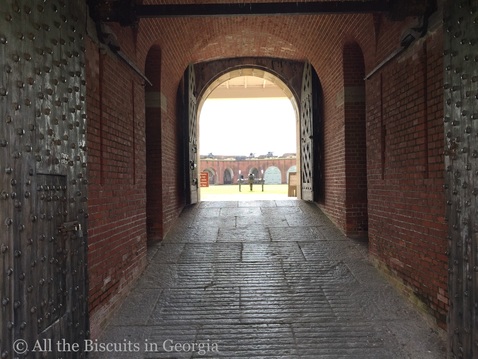 A Cannon Still Guards the Sally Port A Cannon Still Guards the Sally Port The next step on our road trip carried us to the mouth of the Savannah River. Situated between the north and south channels of the river is Cockspur Island. The island is connected to US 80 by a small bridge crossing the south channel. It's not a large island by any means and people often don't even make a distinction between Cockspur and the more developed and well known Tybee Island. But Cockspur is significant. It is currently the location of a United States Coast Guard station and Ft. Pulaski National Monument. As with many of our national monuments, the name doesn't quite cover it all. But we'll start with the fort to give it its due. Ft. Pulaski is one of roughly two dozen masonry forts that the government commissioned in the 1830's to defend the Atlantic and Gulf Coast areas. Savannah was an important port and Pulaski was built to defend the shipping lanes in the Savannah River from attack. A young Army engineer was sent to Pulaski for his first assignment after graduation from West Point. This young man, a Virginian by the name of Robert E. Lee, helped survey, design, and construct this massive fort. Ft. Pulaski is a bit of an engineering marvel. Cypress pilings were driven into the coastal wetlands. The foundation was built over these pilings and then over 25,000,000 bricks were used to build walls that average between five and 11 feet thick, of solid brick. Despite the weight of the structure, there has never been a crack in the fort from foundation settling. In over 170 years the fort has settled less on its foundation than the modern visitor center has in around 40 years. The fort was heavily damaged by artillery fire from Union forces set up on Tybee Island. During this first major encounter between rifled cannon and a masonry fort, new technology proved to be superior. This was led to the end of the masonry fort age as military leaders found that the structures could not withstand the the force of the rifled guns. But the site is not just about the fort. Cockspur Island is an interesting natural location. The meeting of a major river, the coastal wetlands, and the Atlantic Ocean provides excellent opportunities to encounter wildlife, take in beautiful scenery, and enjoy an outing of fishing or hiking. The fort's moat was designed to replenish the water in it with each incoming tide. The constant refresh of brackish water has created a miniature ecosystem that encircles the fort. Fish, turtles, crab, even alligator use the moat for a home. Viewing these animals involves merely looking in the moat.
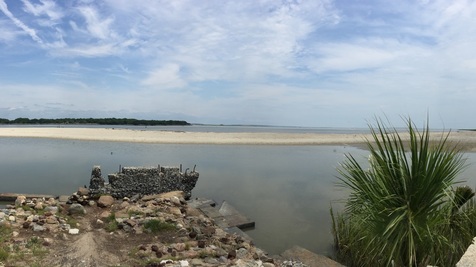 The Ruins of the Old North Pier The Ruins of the Old North Pier The ruins of the Old North Pier are just a short distance further down the trail. This pier was where Wesley's ship landed. It was a bustling trade and transportation center in the 18th century. Ships from England and elsewhere brought goods and passengers to the new colony of Georgia and this was the first pier available to those ships. The Yamacraw Bluff site of the then new city of Savannah lay several more miles upstream. The trail also takes visitors past Battery Hambright, which was built during the Spanish American War to defend the north channel against mine laying ships. While the battery never saw action, it does add to the military history of the site and makes for an interesting pit stop along the trail for an elevated view and maybe a photo. 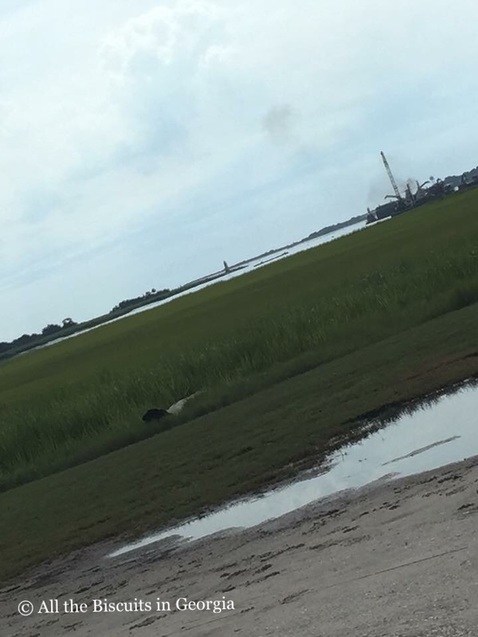 The Small Cockspru Light Sitting on Its Sandbar The Small Cockspru Light Sitting on Its Sandbar The shipping in the area created the need for navigational assistance. In 1848 a 46 foot tall lighthouse was lit for the first time at the far end of the island. The brick structure marked the opening of the south channel. I've always had an affinity for lighthouses. In this area, Tybee Island Light gets the attention and the press. But there is just something about a little lighthouse perched on a sandbar that completely disappears at high tide, leaving the tower jutting up out of the waves. It would be easy to overlook Cockspur Island light, especially with its lofty cousin visible in the distance. In the early 29th century, all shipping was moved to the north channel and Cockspur Light was abandoned. Over the years the elements took their toll and it looked like this brave little lighthouse was doomed. But preservation efforts have been intensified recently and it looks like this lighthouse will be with us for some time. Here's hoping. Tybee Island is just a short drive from this site. There are plenty of local eateries, shopping, museums, and, of course, the beach. This area is just a short drive from Savannah and makes for a great stop on a coastal road trip.
0 Comments
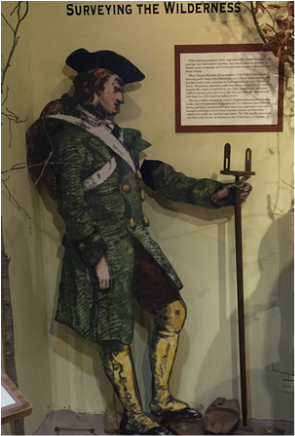 Exhibit in Georgia's Old Capital Museum Depicting the Locating of the Spring Exhibit in Georgia's Old Capital Museum Depicting the Locating of the Spring By Sam Burnham @C_SamBurnham It wouldn't be the annual Georgia Road Trip without a full report. This year that report starts near the geographic center of the state. In 1807, the state government, in its entirety, was packed into fifteen wagons and transported, with military escort, from the former capital, Louisville (pronounced "Lewis-ville"), and headed to the new capital, Milledgeville. The town was named for former Governor John Milledge who proposed the idea of a more appropriate capital for the growing state. The town was designed specifically to serve as the capital and the squares were laid out with each having its own purpose. As the story goes, the crew sent to locate and survey the appropriate location found a spring and, after tasting from it, determined they had found the perfect spot and that spring was designated as the exact center of town. To this day, that spring still flows but access to it is not public and we cannot accurately report further on it. So it goes.
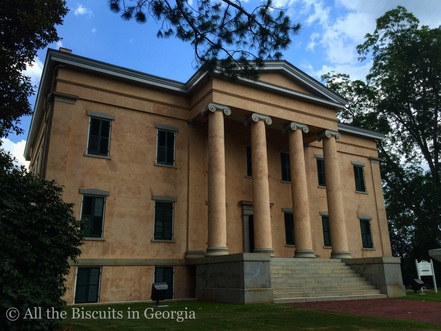 Georgia's 1839 Governor's Mansion Georgia's 1839 Governor's Mansion The new capital city created the need for an appropriate home for the state executive. Georgia decided to construct a house that would reflect the status of power and influence that the state had achieved. The mansion, to this day, is an impressive example of Greek revival architecture. I personally find it much more suitable for the role than its successor on West Paces Ferry Rd. Scheduling did not permit an inside look at the home but the curb appeal alone suggests that this building is what a state executive mansion should be and I look forward to a return visit. 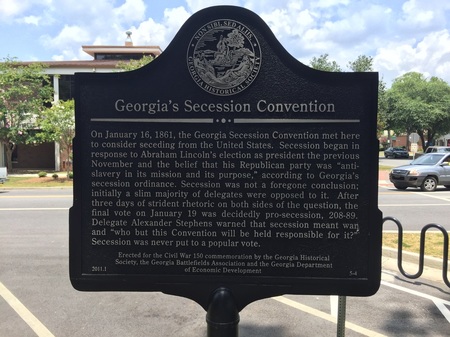 As the antebellum capital of Georgia, Milledgeville and The old state capitol served as the location of the state's secession convention. the convention met January 16-19, 1861. Delegates including Robert Toombs, Alexander Stephens, the Cobb brothers, and Augustus Wright gathered in the house chamber to debate the issue. In what might be the greatest debate in state history, Stephens and Toombs found themselves in rare opposition. The two friends gave their arguments, Stephens against and Toombs in favor of secession. Stephens calm and calculated approach was unable to disarm the sheer force of the oration and personality of Toombs and secession won the day. Georgia left the union on January 19th. After the war, it was determined that Milledgeville was too remote and too difficult to reach for it to be a good location and the seat of state government was relocated to the railroad hub of Atlanta. As that city has exploded in population and commerce, I wonder what impact the proximity of possible lobbyists has had on our government. While some studies suggest that smaller, more remote state capitals are more susceptible to corruption, it stands to reason that putting distance between the statehouse and lobbyists can never be a bad thing. The added charm and small town culture of Milledgeville could also help state government better relate to the areas of the state that have not been swallowed by the sprawl of Atlanta - the areas that house our agriculture and tourism industries.
For this reason, I think the state would be better off with the seat of government still in Baldwin County. This isn't going to happen under any circumstances and I have no delusions otherwise. But, for these same reasons, Milledgeville is an outstanding place to visit. We have barely scratched the surface of this area at this point and we will make a return visit. In the meantime, if you make it to the Old Capital Museum, tell them we sent you, and let us know what you think! The Georgia Road Trip continues....stay tuned! By Sam Burnham @C_SamBurnham The 4th of July is always a festive and joyful occasion. We look back on the stories of Washington, Jefferson, Adams, Franklin. But here in Georgia, we have a bit of our own Revolutionary History. 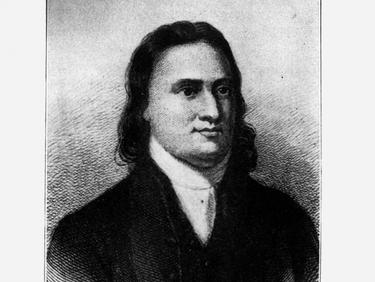 Button Gwinnett Button Gwinnett Button Gwinnett, George Walton and Lyman Hall were the Georgians who signed the Declaration. In 1777, Gwinnett challenged Lachlan McIntosh to a duel over a feud stemming from Georgia's failed foray into British East Florida. (This was neither the first, nor would it be the last time a feud erupted from Georgia's lack of success against Florida on the St. John's river, but that is another story for another time). In the duel, Gwinnett shot McIntosh, McIntosh shot Gwinnett, McIntosh recovered, and Gwinnett died over a loss to Florida. (Lesson: don't challenge rough Scotsmen to duels and don't lose to Florida.) Gwinnett County is named for him. 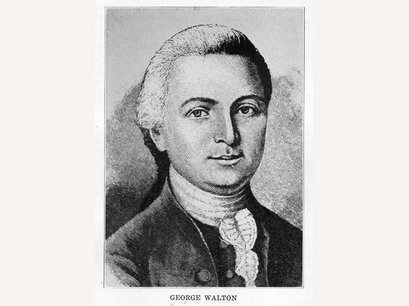 George Walton would serve Georgia in many capacities. He was a member of the Continental Congress, served as governor, and was a successful attorney. (The last role is interesting as Georgia's original colonial charter banned slavery, distilled liquor, and attorneys.) Walton was captured during the British assault on Savannah and was freed by a prisoner exchange. He shortly thereafter became one of many Georgia politicians to be elected to office after imprisonment, being elected as governor and then back to congress.  Lyman Hall Lyman Hall Lyman Hall was a minister, a doctor and a Yale grad. (None of these were banned by the original charter but at least one is now considered to be frowned upon.) He served in congress and as governor. During his stint as governor he had to put up with typical post-revolutionary issues such as land confiscations, disgruntled and disappointed Tories, and Native Americans no longer disposed to the hospitality offered by Tomochichi. Hall's greatest contribution (unless you attended college on North Avenue in Atlanta) was his role in helping to establish the University of Georgia in 1785. Having not lost to Florida, he lived to age 66 and died at his Shell Bluff plantation in 1790. Hall County is named for him. So Georgia had her own revolutionary leaders. They aren't nearly as famous as the Massachusetts, Virginia, or Pennsylvania delegations but they have their own legacy just the same. So, from everyone at All the Biscuits in Georgia, Happy 4th of July! May it be safe, festive, and free! |
Sam B.Historian, self-proclaimed gentleman, agrarian-at-heart, & curator extraordinaire Social MediaCategories
All
Archives
November 2022
|
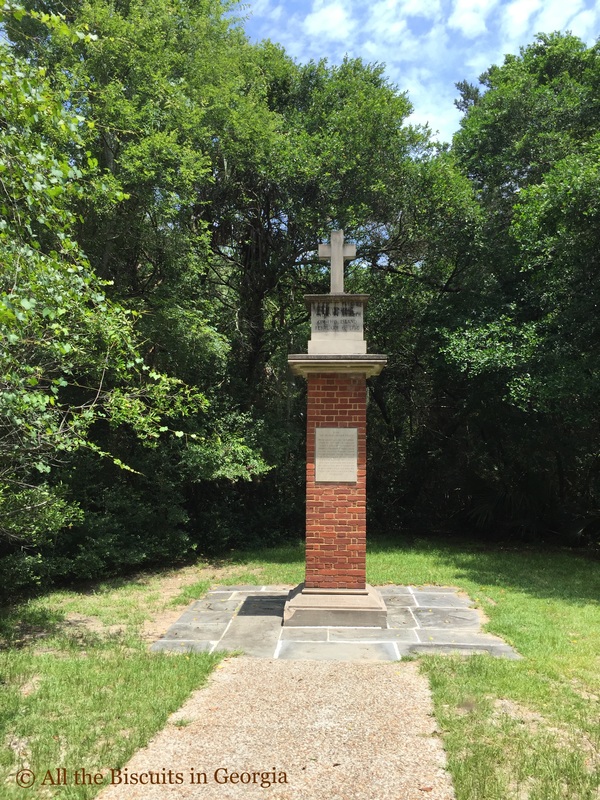
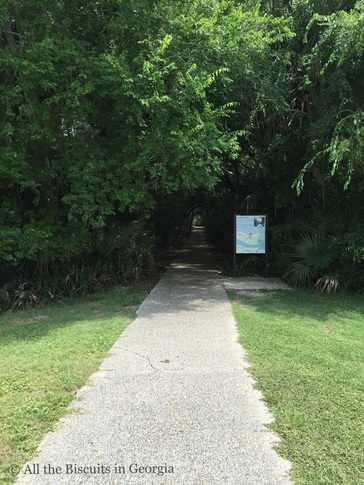
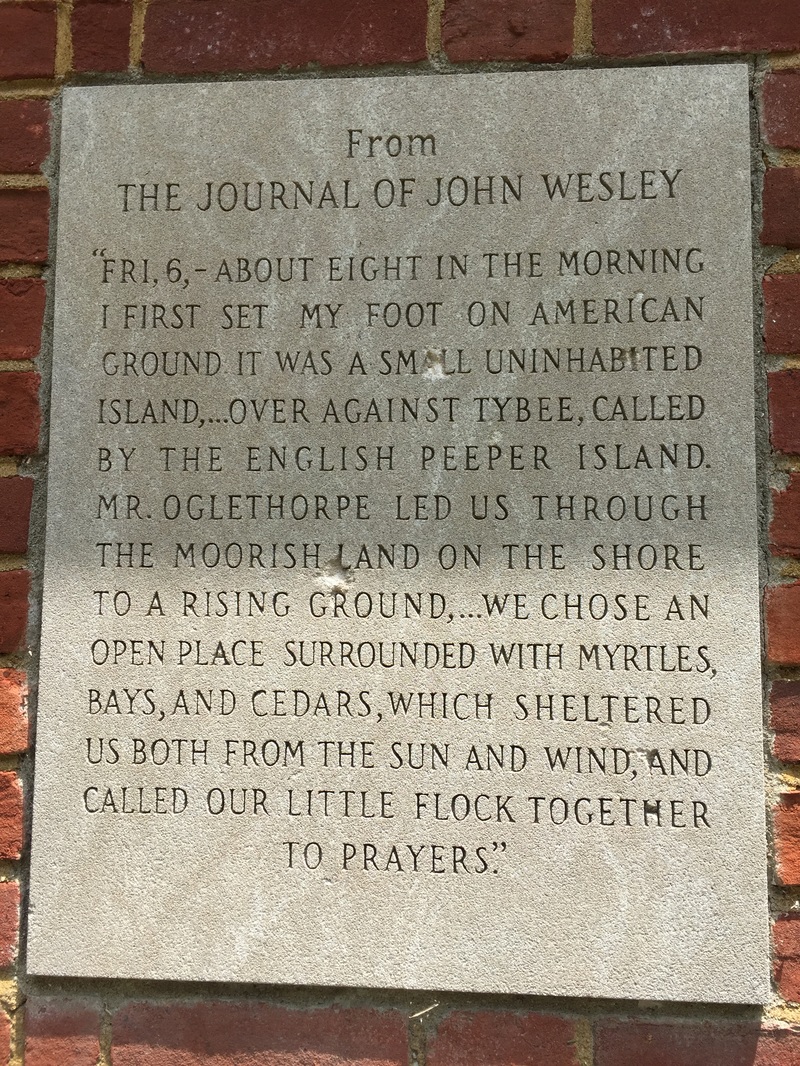
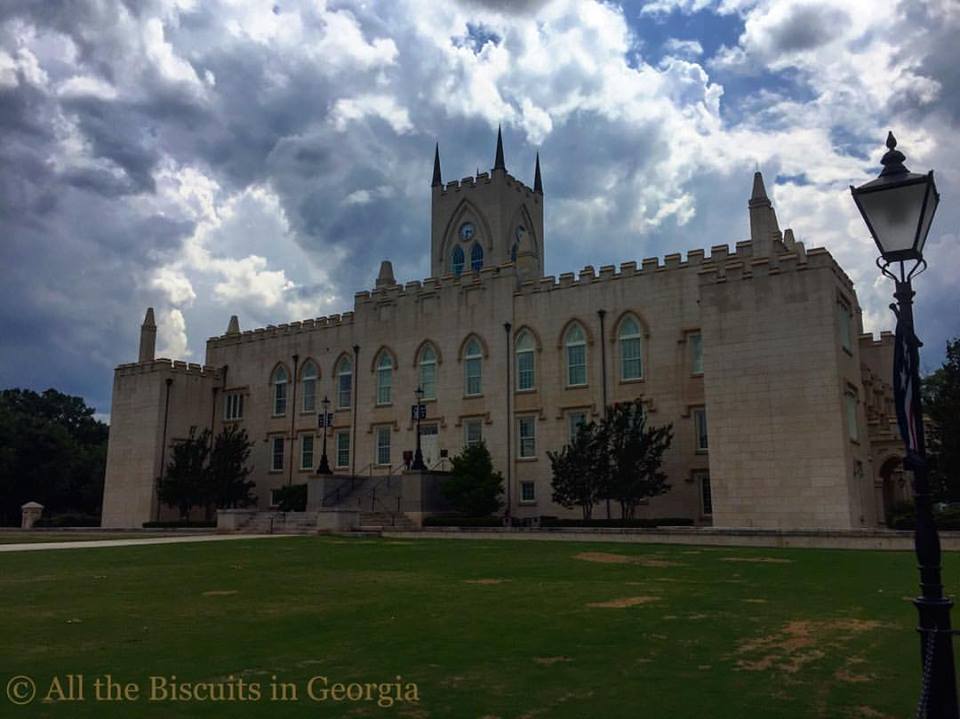
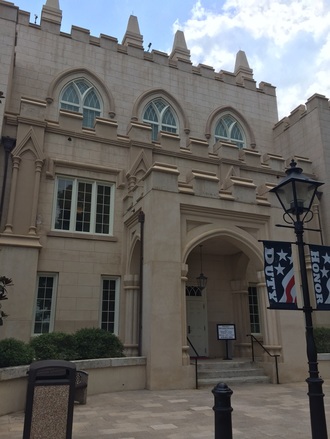
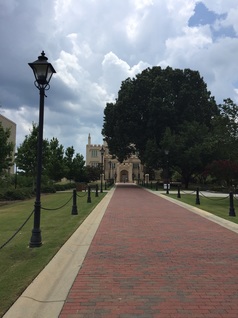
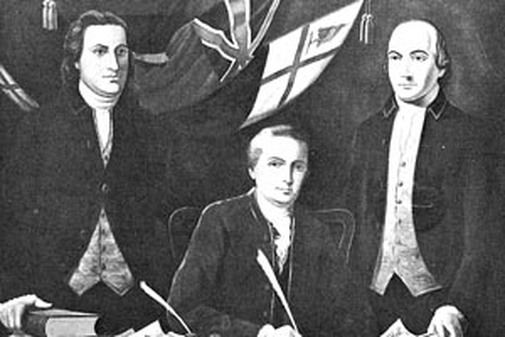




 RSS Feed
RSS Feed
